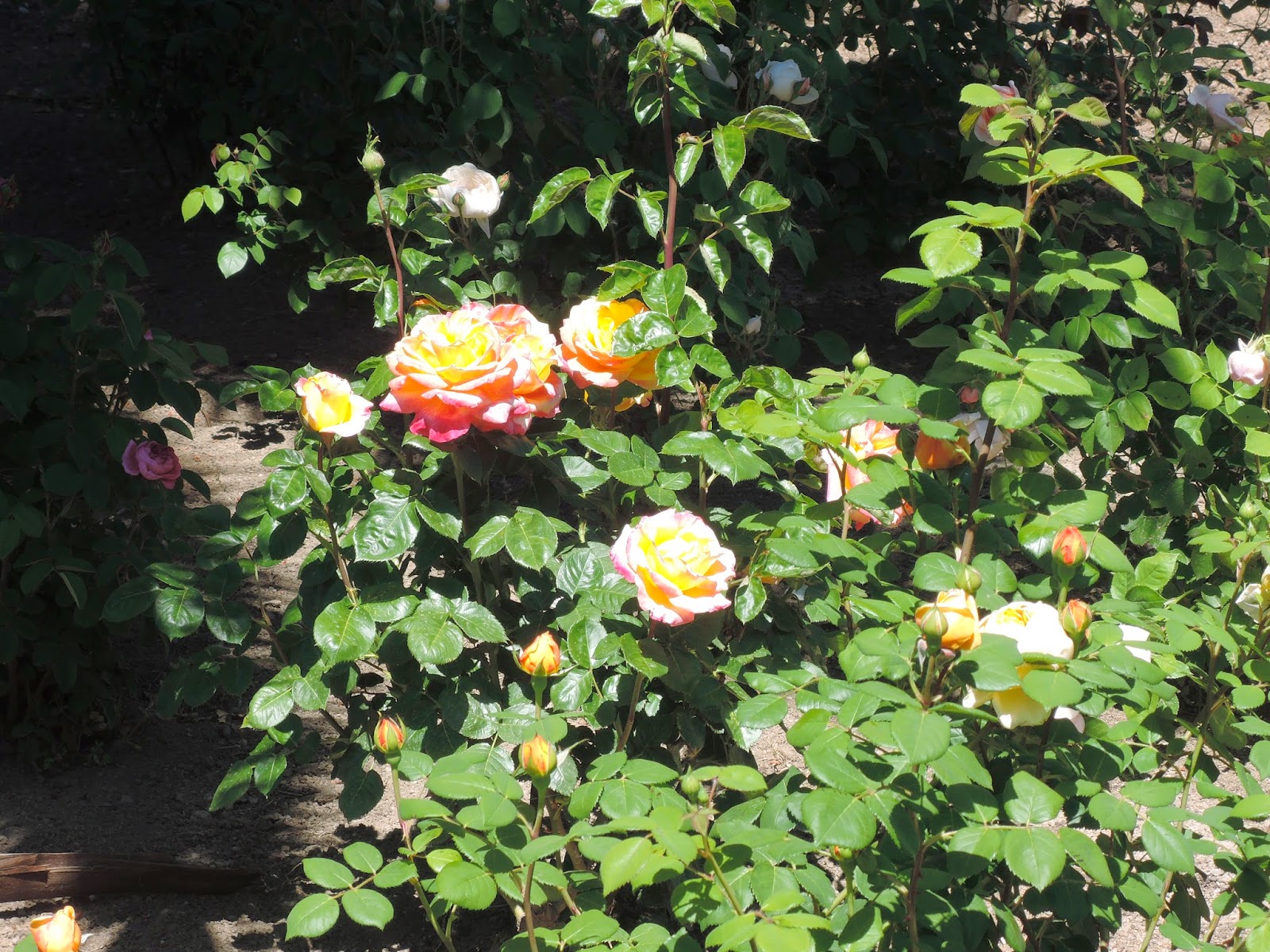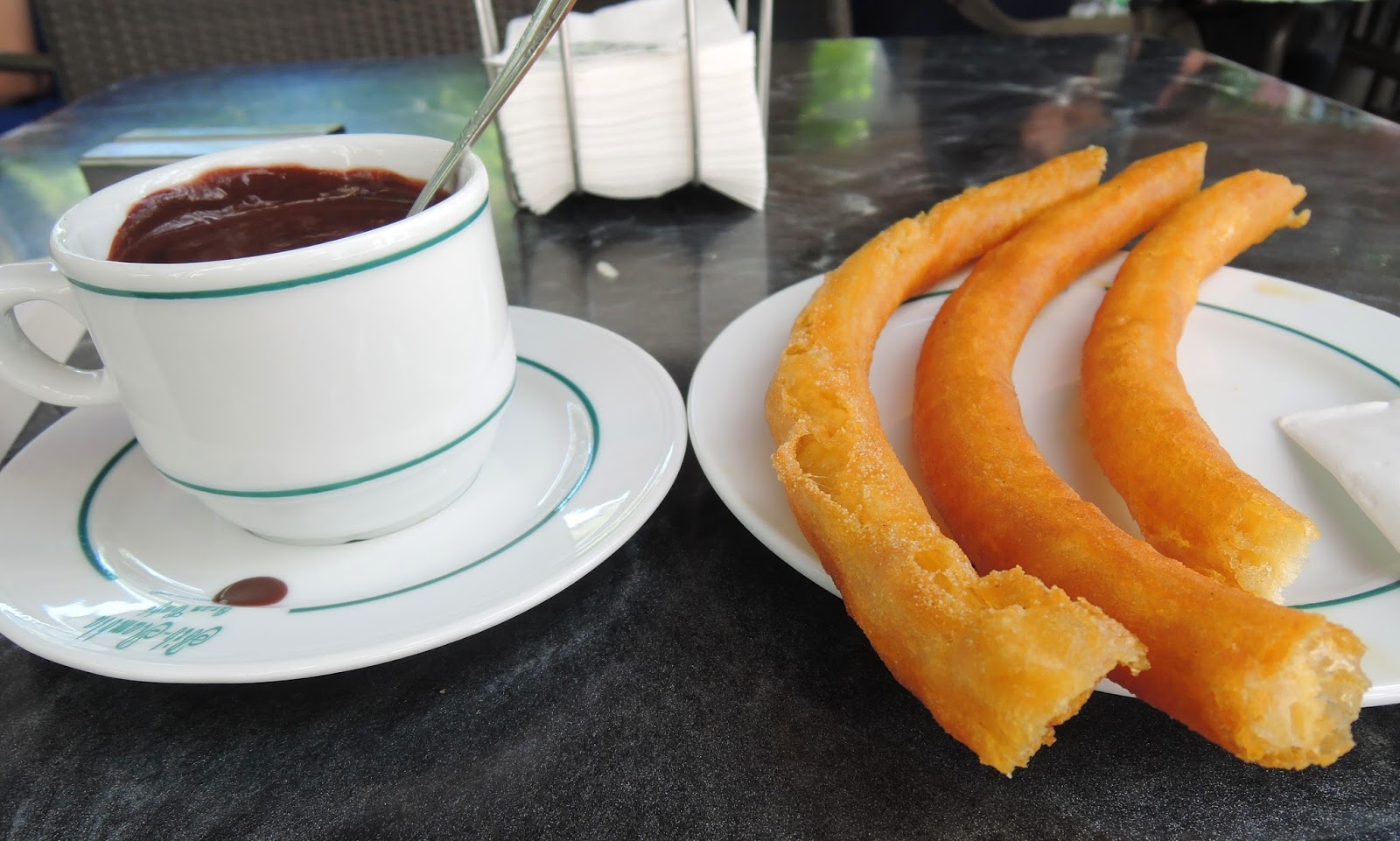It's been a month since I set off on my trip to London and Spain, and I have only just begun writing about my Spanish adventures. So I will try to keep this even shorter and sweeter than my post about London, and leave you with mostly photos.
I flew out of London early in the morning, rising in the wee hours to leave the hostel and a sleeping Linnea and take a night bus, to a coach, to the airport far outside of London, to fly to Málaga, where I would then hop on another coach to Granada, and finally navigate a convoluted bus system into the city center to find my hostel. Phew.
The steep road up to my hostel, an easy hill in Granada:
ANDALUCÍA, TE AMO
I have fallen in love with the south of Spain. I want to stay here forever and ever. The weather is hot and constantly sunny during the day and cool in the morning and evening, the entire city is very pedestrian with steep, winding, narrow streets lined with countless tapas bars, and it is compact, so there is something on every tiny street. It has impressive vegetarian options (for Spain), and it seems to attract a large population of hippies, anarchists, students and wanderers. It is cheap to the point of robbery- I bought a beer in a tapas place for 2 euros and I got an entire sandwich with it, with fries, for free, and another place gave me veggie sushi with my 2euro50 sangria. Parties start at 1am here, so dinner is at 10, or later so it's free with your drinks. Most of all, Granada is the most beautiful and most quintessentially Spanish of the cities I visited in Spain. Everything you know to be Spanish you can find here: flamenco (which I sadly missed), paella, sangria, tapas, grand plazas filled with restaurants and winding alleys with orange trees hanging, Moorish architecture, and most importantly, very little English. The lack of English menus, English speakers, and English tourist traps made Granada feel authentically Spanish in comparison to Santiago, a destination for all Europeans on El Camino and strongly influenced by Portuguese culture, and Madrid, a major metropolitan city.
It was one of the most exciting things for me to be speaking Spanish again, as I had spent five years studying it in middle and high school, and I haven't had a chance to practice it since. I was pleasantly surprised with my ability to have basic exchanges between servers and cashiers, and to be able to read signs and menus. Simple things delighted me, like saying hello and goodbye and gaining confidence when saying "puedo pagar?", since after 4 months in the Netherlands I do not speak any Dutch and it was freeing to have even a basic understanding of Spanish. I have been thinking a lot about language privilege while in Europe, and how much I rely on my privilege of speaking English as a language so many other are forced to learn in addition to their first language, and I was glad to have the ability to respectfully defer to a country's native tongue.
Andalucía is the southeastern region of Spain, including the coast that faces North Africa, and contains Málaga, Granada, and Sevilla as major cities. It has a long history of being home to Spain's Moorish culture, with strong influence from nearby Morocco, and it is the place where most of the Spanish Muslim population found refuge when they were being forced further and further south by Catholics before and during the Inquisition. Looking around Granada one is contantly reminded of these two cultures combining in the architecture, monuments and historical remnants, and of course by the Alhambra, the most visited Spanish attraction and built for the last Muslim emirs of Spain.
Granada is incredibly hilly and I got quite a workout walking up and down its streets, many of which were actually long staircases. The view from a hill near the Alhambra, with beautiful sidewalk designs seen everywhere in Granada:
My hostel in Granada was lovely, small and intimate, making for the ideal atmosphere to meet people. I was greeted immediately by a bunch of American students and a couple of Canadians, taken aback by their very forward friendliness and then remembering that's what we're like, I suppose. The major downside to my hostel experience was the presence of two Californian guys, one of which lost his phone and had a very loud, violent hissy fit over it for several hours, and the other forgot his key one night and climbed drunkenly onto the second floor balcony to bang on the window at 7am. Luckily I spent most of my time with an English girl named Amy, commiserating over the annoying Californians and wandering around various tapas places.
Here are some photos from wandering around the city center my first day:
 |
| Interesting writing on the cathedral |
 |
| Cypress trees everywhere! |
 |
| Inside an anarchist bookshop. |
 |
| I want to live here. |
I ate a delicious 3-course vegan meal with fresh juice and a dessert all for 12 euro 50 at this lovely place:
LA ALHAMBRA
My camera ran out of battery halfway through my six hour long visit to the Alhambra, but here are the ones I took in the gardens and the Alcazaba, the armed fortress visible from the Albaicín and lower Granada.
 |
| Add caption |
 |
| The smell of roses is everywhere. |
 |
| Inside a Moorish bath |
In la Plaza de Isabella, near my hostel, you can see a statue remembering the birth of imperialistic violent conquest in the Americas. Yay!
Chocolate con churros is a staple of every Spanish diet, though not a particularly healthy one. The chocolate is basically melted chocolate, very thick, into which you dip churros, which are fried dough in stick form. Very sugary, very greasy, I felt a bit sick afterwards, but it was nice to sit in the plaza with my book and peoplewatch.
My first morning in Granada I went for a bit of a free walking tour and heard a young man tell us about the history of the Albaicin, a neighborhood in the north of the city built into a hill facing the Alhambra. It was originally inhabited by a community of displaced Moors, and is now a historical landmark plagued by restrictive preservation laws inhibiting healthy growth of business and commercial needs of those living there. It has also become very hard for its inhabitants to continue to live there if they do not have the money to keep their homes up to standard, and many are forced to leave. The Albaicín is known most now for outstanding flamenco and gorgeous views of the Alhambra from San Nicolás lookout point. I couldn't stay for the whole tour, so the second morning I did the steep, twisting walk up to San Nicolás to see the view. The whole way there was a beautiful combination of old cobbled streets, whitewashed houses built into the hill, and glimpses of the Alhambra and the Sierras, until I reached the top, where I was met with a crowd of people happily dancing to street music and hanging out.
 |
| "Revolution is only what you do - is what you feel" |
 |
| SO MANY STAIRS |
I left Granada after two nights, feeling as if I had only scratched the surface of the little city and wished I could stay for a whole week more. It is definitely a place that will be calling me back soon. Off to Santiago de Compostela!





















No comments:
Post a Comment